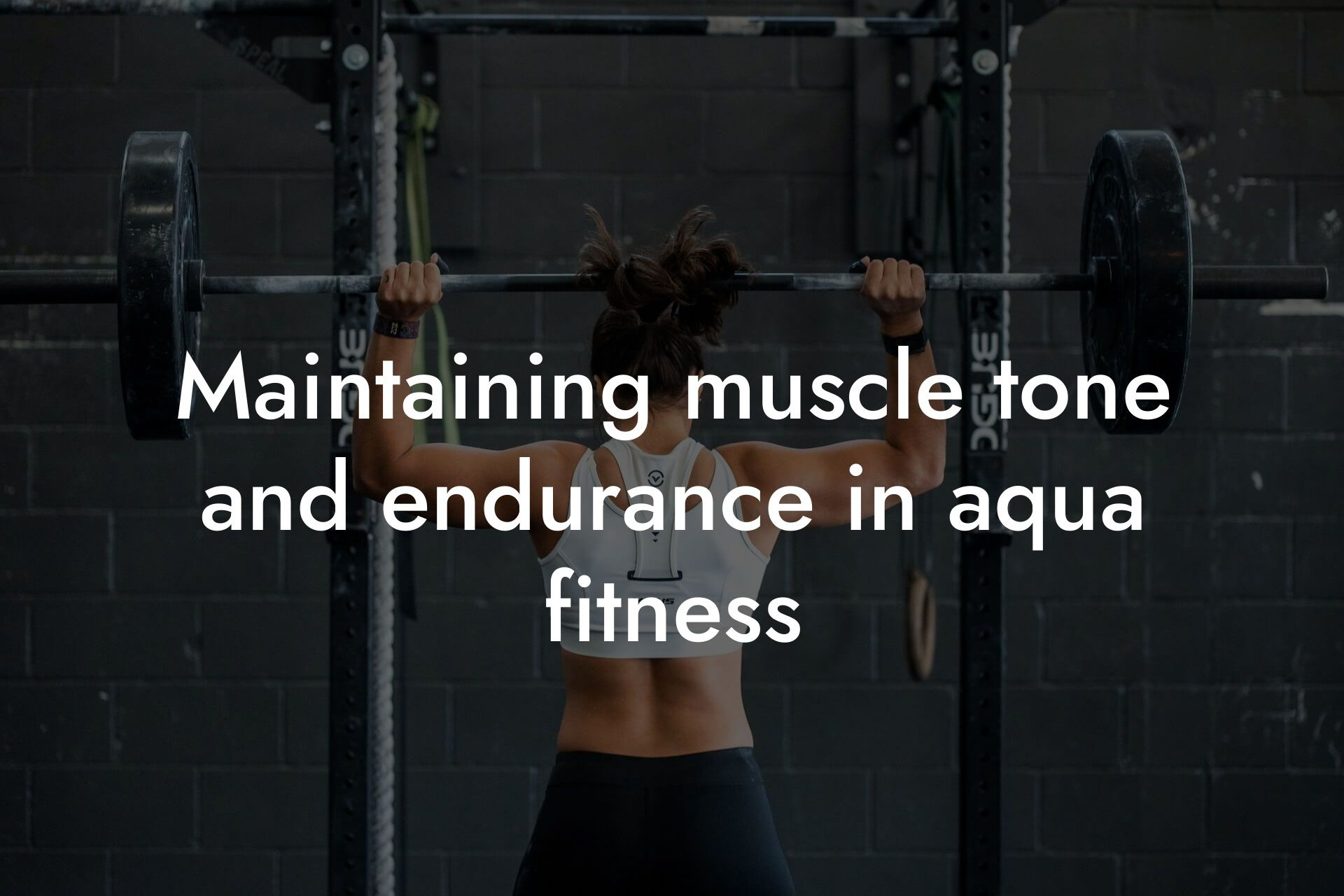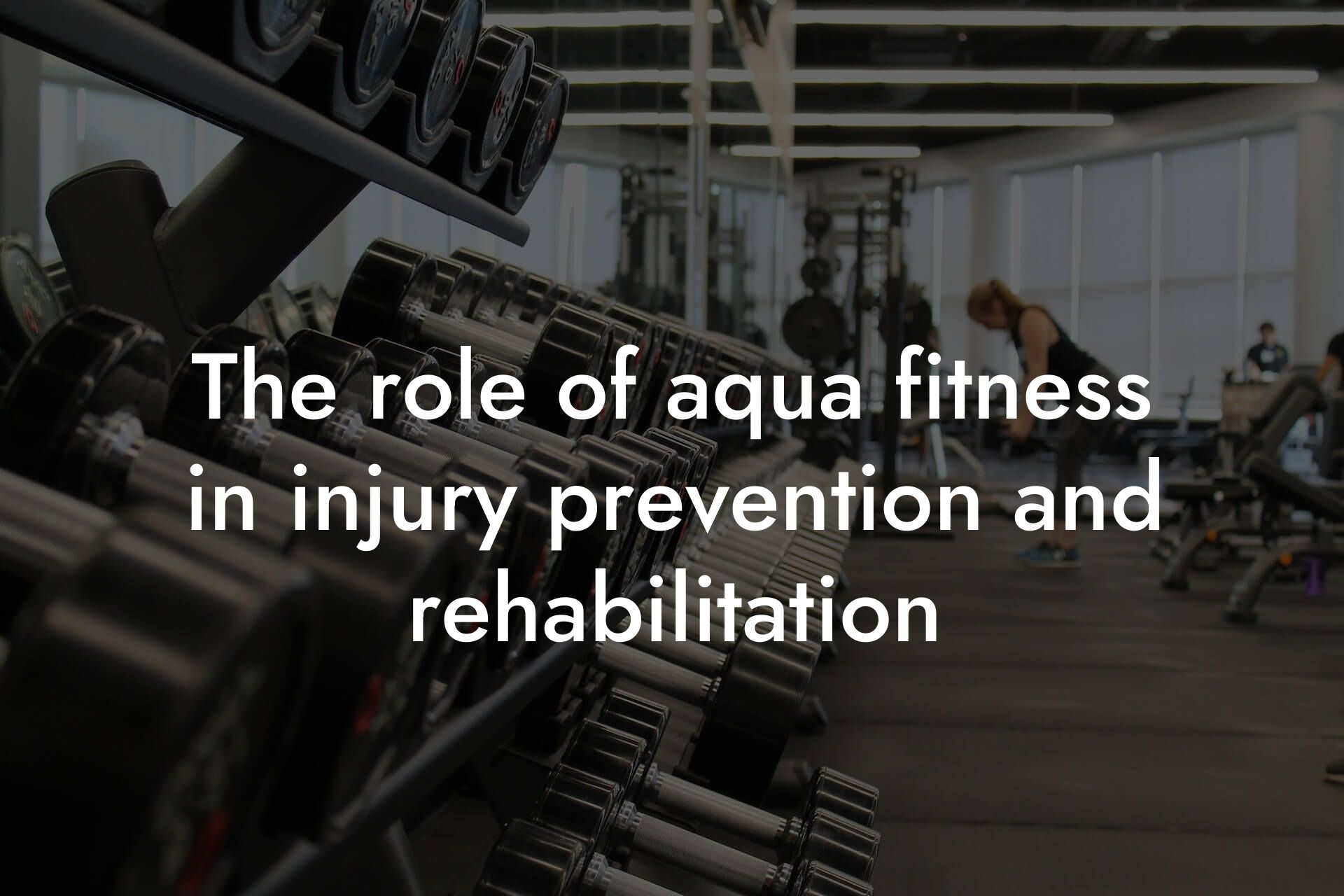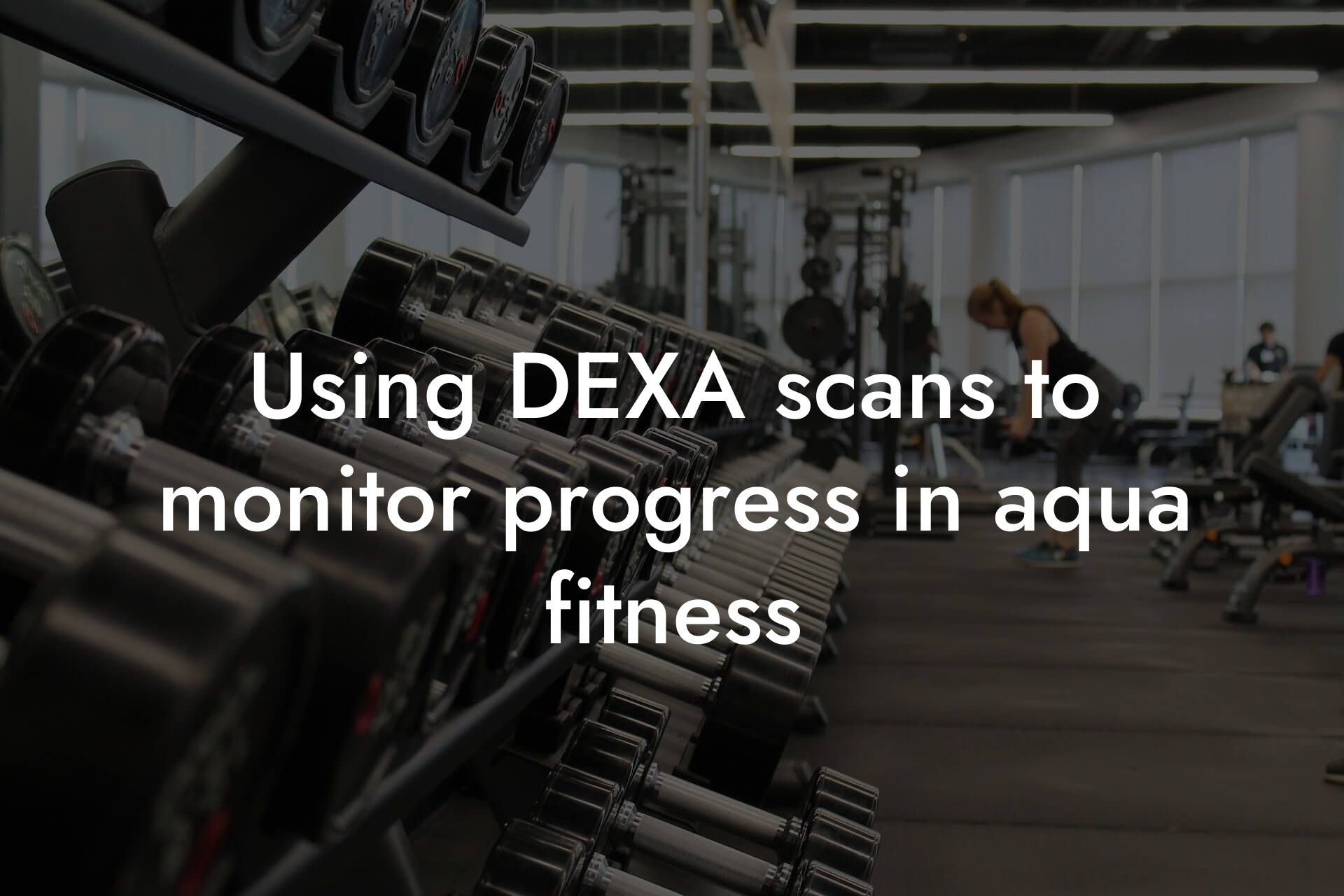As a high-earning professional, you understand the importance of maintaining a healthy and fit physique. When it comes to aqua fitness, having a leaner body composition can significantly impact your performance and overall experience. Excess body fat can hinder your buoyancy and flexibility in the water, making it more challenging to move efficiently and effectively. In this article, we'll delve into the benefits of reducing body fat for better buoyancy and flexibility in aqua fitness, and provide you with actionable tips to achieve your goals.
Table of Contents
- The Science Behind Buoyancy and Flexibility in Aqua Fitness
- The Benefits of Reducing Body Fat for Aqua Fitness
- How to Reduce Body Fat for Better Buoyancy and Flexibility
- The Role of DEXA Scans in Reducing Body Fat
- Sample Workout Routine for Reducing Body Fat in Aqua Fitness
- Final Tips and Reminders
- Frequently Asked Questions
The Science Behind Buoyancy and Flexibility in Aqua Fitness
Buoyancy refers to the ability of an object or person to float or rise in water. In aqua fitness, buoyancy is essential for performing various exercises and movements. When you have a higher percentage of body fat, your body density increases, making it more difficult to stay afloat. This means you'll need to expend more energy to stay buoyant, which can lead to fatigue and decreased performance.
Flexibility, on the other hand, is critical for moving efficiently and effectively in the water. Excess body fat can restrict your range of motion, making it more challenging to perform exercises that require flexibility, such as leg kicks and arm movements. By reducing body fat, you can improve your flexibility and move more freely in the water.
The Benefits of Reducing Body Fat for Aqua Fitness
Reducing body fat can have a significant impact on your aqua fitness performance. Some of the benefits include:
• Improved buoyancy: With a leaner body composition, you'll be able to stay afloat more easily, reducing the energy required to perform exercises.
• Increased flexibility: By reducing body fat, you'll be able to move more freely and efficiently in the water, allowing for a more effective workout.
• Enhanced endurance: With a lower body fat percentage, you'll be able to perform exercises for longer periods without fatigue.
• Better overall health: Reducing body fat can also lead to improved overall health, reducing the risk of chronic diseases such as heart disease and diabetes.
How to Reduce Body Fat for Better Buoyancy and Flexibility
Reducing body fat requires a combination of a healthy diet, regular exercise, and lifestyle changes. Here are some tips to help you get started:
• Create a calorie deficit: To lose body fat, you need to consume fewer calories than you burn. Aim for a daily calorie deficit of 500-1000 calories to promote weight loss.
• Eat protein-rich foods: Protein is essential for building and repairing muscle tissue. Aim for 1.6-2.2 grams of protein per kilogram of body weight from sources such as lean meats, fish, and plant-based options.
• Incorporate HIIT workouts: High-Intensity Interval Training (HIIT) workouts are effective for burning fat and improving cardiovascular fitness. Incorporate HIIT workouts into your exercise routine 2-3 times per week.
• Stay hydrated: Drinking plenty of water can help with weight loss and improve overall health. Aim for at least 8-10 glasses of water per day.
• Get enough sleep: Poor sleep can disrupt hormones that regulate hunger and fullness, leading to weight gain. Aim for 7-9 hours of sleep per night.
The Role of DEXA Scans in Reducing Body Fat
DEXA (Dual-Energy X-ray Absorptiometry) scans are a valuable tool for measuring body composition. By providing a detailed analysis of your body fat percentage, lean mass, and bone density, DEXA scans can help you track your progress and make data-driven decisions about your diet and exercise routine.
At Tano Performance Group, we use DEXA scans to provide our clients with a comprehensive body assessment. Our expert team will work with you to create a personalized plan tailored to your specific needs and goals.
Sample Workout Routine for Reducing Body Fat in Aqua Fitness
Here's a sample workout routine you can follow to reduce body fat and improve buoyancy and flexibility in aqua fitness:
Warm-up: 5-10 minutes of light cardio such as jogging or jumping jacks
Monday (Upper Body):
• 3 sets of 12-15 reps of water-based push-ups
• 3 sets of 12-15 reps of water-based dumbbell rows
• 3 sets of 12-15 reps of water-based shoulder presses
Wednesday (Lower Body):
• 3 sets of 12-15 reps of water-based squats
• 3 sets of 12-15 reps of water-based lunges
• 3 sets of 12-15 reps of water-based calf raises
Friday (Core):
• 3 sets of 12-15 reps of water-based planks
• 3 sets of 12-15 reps of water-based Russian twists
• 3 sets of 12-15 reps of water-based leg raises
Cool-down: 5-10 minutes of stretching exercises
Reducing body fat is essential for improving buoyancy and flexibility in aqua fitness. By following a healthy diet, regular exercise, and lifestyle changes, you can achieve your goals and take your aqua fitness performance to the next level. Remember to incorporate DEXA scans into your fitness routine to track your progress and make data-driven decisions. With patience, dedication, and the right guidance, you can achieve a leaner, healthier body that's perfect for aqua fitness.
Final Tips and Reminders
Remember to always consult with a healthcare professional before starting any new diet or exercise routine. It's also essential to listen to your body and take rest days as needed. With consistency and patience, you can achieve your goals and enjoy the many benefits of reducing body fat for better buoyancy and flexibility in aqua fitness.
Frequently Asked Questions
What is the importance of reducing body fat for aqua fitness?
Reducing body fat is crucial for aqua fitness as it directly impacts buoyancy and flexibility in the water. Excess body fat can make it more challenging to move efficiently and effectively, leading to reduced performance and increased risk of injury. By reducing body fat, individuals can improve their overall aqua fitness experience, enhance their performance, and reduce the risk of injury.
How does body fat affect buoyancy in the water?
Body fat is less dense than water, which means it can cause the body to float more easily. However, excess body fat can also make it more difficult to control movements and maintain a stable position in the water. By reducing body fat, individuals can achieve a more balanced buoyancy, making it easier to move and perform exercises in the water.
What is the ideal body fat percentage for aqua fitness?
The ideal body fat percentage for aqua fitness varies depending on individual goals and fitness levels. However, a general guideline is to aim for a body fat percentage between 18-24% for men and 25-31% for women. This range allows for optimal buoyancy and flexibility while also providing a healthy and sustainable body composition.
How can I measure my body fat percentage?
There are several ways to measure body fat percentage, including skinfold measurements, bioelectrical impedance analysis (BIA), and dual-energy X-ray absorptiometry (DXA). It's essential to consult with a healthcare professional or certified fitness expert to determine the most accurate and suitable method for your individual needs.
What are the benefits of reducing body fat for aqua fitness?
Reducing body fat for aqua fitness offers numerous benefits, including improved buoyancy, increased flexibility, enhanced performance, and reduced risk of injury. Additionally, reducing body fat can also improve overall health and well-being, boost confidence, and enhance mental clarity.
How can I reduce body fat for aqua fitness?
To reduce body fat for aqua fitness, focus on a combination of healthy nutrition, regular exercise, and stress management. Aim to create a calorie deficit through a balanced diet, engage in regular cardio and strength training exercises, and prioritize stress-reducing activities such as yoga or meditation.
What is the role of nutrition in reducing body fat for aqua fitness?
Nutrition plays a critical role in reducing body fat for aqua fitness. Focus on consuming a balanced diet rich in whole foods, fruits, vegetables, lean proteins, and healthy fats. Aim to reduce processed foods, added sugars, and saturated fats, and stay hydrated by drinking plenty of water.
How can I incorporate strength training into my aqua fitness routine?
Incorporating strength training into your aqua fitness routine can help improve overall fitness and reduce body fat. Focus on exercises that target multiple muscle groups, such as squats, lunges, and leg press, and incorporate resistance bands or weights to increase intensity.
What is the importance of flexibility in aqua fitness?
Flexibility is essential for aqua fitness as it allows for a full range of motion and reduces the risk of injury. Regular stretching exercises, both in and out of the water, can help improve flexibility and enhance overall aqua fitness performance.
How can I improve my flexibility for aqua fitness?
To improve flexibility for aqua fitness, engage in regular stretching exercises, such as hamstring and quadriceps stretches, and incorporate activities like yoga or Pilates into your routine. Additionally, focus on improving your posture and reducing muscle tension through relaxation techniques like deep breathing and meditation.
What is the connection between body fat and bone density?
Body fat and bone density are closely linked, as excess body fat can lead to reduced bone density. This is because fat cells produce inflammatory markers that can interfere with bone health. By reducing body fat, individuals can improve bone density and reduce the risk of osteoporosis and other bone-related disorders.
How can I maintain a healthy bone density for aqua fitness?
To maintain a healthy bone density for aqua fitness, focus on a balanced diet rich in calcium and vitamin D, engage in regular weight-bearing exercises, and incorporate activities that promote bone density, such as jumping and resistance training.
What is the role of stress management in reducing body fat for aqua fitness?
Stress management plays a crucial role in reducing body fat for aqua fitness. Chronic stress can lead to increased cortisol levels, which can contribute to fat storage around the midsection. Engage in stress-reducing activities like yoga, meditation, and deep breathing to help manage stress and promote weight loss.
How can I incorporate stress-reducing activities into my aqua fitness routine?
Incorporate stress-reducing activities into your aqua fitness routine by starting or ending your workout with relaxation techniques like deep breathing, meditation, or yoga. Additionally, prioritize self-care activities outside of the water, such as reading, listening to music, or taking a relaxing bath.
What are some common mistakes to avoid when trying to reduce body fat for aqua fitness?
Common mistakes to avoid when trying to reduce body fat for aqua fitness include crash dieting, overexercising, and neglecting proper nutrition. Additionally, avoid unrealistic expectations and focus on sustainable, long-term lifestyle changes that promote overall health and well-being.
How long does it take to see results from reducing body fat for aqua fitness?
The time it takes to see results from reducing body fat for aqua fitness varies depending on individual factors, such as starting point, diet, exercise, and consistency. However, with a consistent and sustainable approach, individuals can expect to see noticeable improvements in buoyancy, flexibility, and overall fitness within 6-12 weeks.
What are some motivational tips for reducing body fat for aqua fitness?
Motivational tips for reducing body fat for aqua fitness include setting realistic goals, tracking progress, finding a workout buddy, and rewarding yourself for small milestones. Additionally, focus on the benefits of reducing body fat, such as improved health and increased confidence, to stay motivated and driven.
How can I maintain my reduced body fat percentage for aqua fitness?
To maintain a reduced body fat percentage for aqua fitness, focus on sustainable lifestyle changes, such as a balanced diet and regular exercise. Avoid fad diets and quick fixes, and instead prioritize long-term habits that promote overall health and well-being.
What are some common myths about reducing body fat for aqua fitness?
Common myths about reducing body fat for aqua fitness include the idea that spot reduction is possible, that extreme calorie restriction is necessary, and that muscle gain will automatically lead to fat loss. Educate yourself on the facts and focus on a balanced, sustainable approach to reducing body fat.
How can I get started with reducing body fat for aqua fitness?
To get started with reducing body fat for aqua fitness, consult with a healthcare professional or certified fitness expert to determine a personalized approach. Set realistic goals, focus on sustainable lifestyle changes, and prioritize a balanced diet, regular exercise, and stress management.
What are some additional resources for reducing body fat for aqua fitness?
Additional resources for reducing body fat for aqua fitness include fitness apps, online workout programs, and health and wellness websites. Consult with a healthcare professional or certified fitness expert to determine the most suitable resources for your individual needs.
How can I track my progress when reducing body fat for aqua fitness?
Track your progress when reducing body fat for aqua fitness by monitoring your body fat percentage, weight, measurements, and progress photos. Additionally, track your workout routine, diet, and stress levels to identify areas for improvement and optimize your approach.
Here are some related articles you might love...
- Maintaining muscle tone and endurance in aqua fitness
- The role of aqua fitness in injury prevention and rehabilitation
- Using DEXA scans to monitor progress in aqua fitness
- Nutrition tips for sustained energy in aqua fitness classes
- Bone density and its role in aqua fitness performance
- How body composition impacts aqua fitness performance
- Balancing strength, flexibility, and cardiovascular health in aqua fitness
- Strength training tips to complement your aqua fitness routine
- Recovery techniques for aqua fitness practitioners
Zak Faulkner
Zak Faulkner is a leading authority in the realm of physical health and body composition analysis, with over 15 years of experience helping professionals optimise their fitness and well-being. As one the experts behind Tano Performance Group, Zak has dedicated his career to providing in-depth, science-backed insights that empower clients to elevate their physical performance and overall health.
With extensive knowledge of DEXA technology, Zak specializes in delivering comprehensive body assessments that offer precise data on body fat, muscle mass, bone density, and overall physique. His expertise enables individuals to make informed decisions and achieve their fitness goals with accuracy and confidence. Zak’s approach is rooted in a deep understanding of human physiology, combined with a passion for helping clients unlock their full potential through personalised strategies.
Over the years, Zak has earned a reputation for his commitment to excellence, precision, and client-focused service. His guidance is trusted by top professionals who demand the best when it comes to their health. Whether advising on fitness programs, nutritional strategies, or long-term wellness plans, Zak Faulkner’s insights are a valuable resource for anyone serious about taking their health and fitness to the next level.
At Tano Performance Group, Zak continues to lead our Content Team revolutionising how professionals approach their physical health, offering unparalleled expertise that drives real results.




